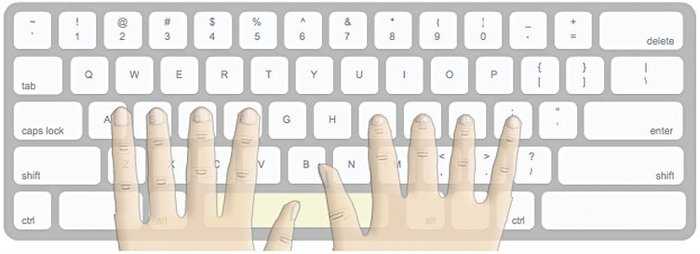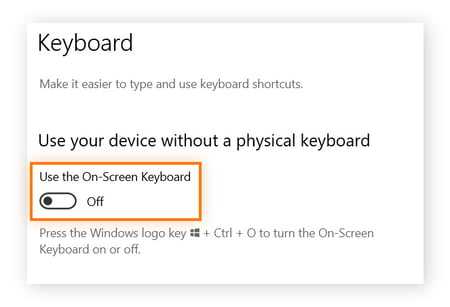To master the home row keys quickly, focus on consistent practice and proper finger placement. Use typing exercises and drills to build muscle memory, and gradually increase speed without sacrificing accuracy. Keep your hands relaxed and stay patient—improvement comes with regular effort.
If you want to learn home row key positions efficiently, start by understanding the placement of your fingers on the ASDF and JKL; keys, then practice typing simple words repeatedly. Use online tools or typing software that guides you through drills designed for beginners. With time and dedication, your fingers will naturally memorize the positions, making your typing faster and more accurate.
Getting comfortable with the home row is the foundation of fast, error-free typing. It’s all about building consistent habits—placing your fingers correctly, practicing often, and gradually challenging yourself with more complex texts. Remember, everyone starts somewhere, but persistence will turn you into a proficient typist faster than you think.
How to Learn Home Row Key Positions
Learning the correct home row key positions is essential for typing efficiently. It is the foundation of touch typing, allowing you to type quickly and accurately without looking at the keyboard. This section will guide you through understanding what the home row is and why it matters.
Understanding the Home Row
The home row refers to the middle row of keys on a standard QWERTY keyboard. It includes the keys A, S, D, F for the left hand and J, K, L, ; for the right hand. These keys serve as the resting position for your fingers.
Fingers return to the home row after each key press, making it easier to find other keys. Proper positioning ensures smoother typing flow and reduces mistakes. Therefore, knowing how to find and stay on the home row is crucial for anyone learning to type.
Correct Finger Placement for the Home Row
Start by placing your fingers on the home row keys. Your left index finger should rest on F and G, while your right index finger rests on J and H. The thumbs should gently hover over the spacebar.
Ensure your fingers curve naturally over the keys and that your wrists are straight. Proper finger placement helps you reach other keys easily without straining your hands. Practice maintaining this posture to build muscle memory effectively.
How to Find the Home Row Keys
If you’re new to typing, it helps to find visual or tactile guides on your keyboard. Many keyboards have small bumps on the F and J keys. These bumps serve as markers for your index fingers to locate the correct position.
Gently touch these bumps with your index fingers to align your hands. From there, naturally position the remaining fingers on the corresponding home row keys. Use these markers as your starting point every time you practice.
Practicing Home Row Exercises
Practice daily with simple exercises to build familiarity with the home row. For example, try typing the sequences ASDF and JKL; repeatedly, focusing on finger placement. You can do this using online typing tutors or printable worksheets.
Another effective exercise is to type the words that consist mainly of home row letters, such as sad, fad, and jacks. Repetition helps develop muscle memory, making your finger movements automatic over time.
Using Typing Software and Games
Interactive typing programs can accelerate your learning process. These tools provide structured lessons, real-time feedback, and fun games to keep you motivated. Many are designed specifically to teach home row positioning.
Popular options include TypingClub, Keybr, and Nitro Type. They start with home row exercises and gradually introduce more keys as you improve your skills. Regular use of these tools can significantly enhance your speed and accuracy.
Common Mistakes to Avoid
Avoid looking at the keyboard while typing; this breaks the muscle memory. Stay focused on keeping your fingers on the home row, moving only when necessary. Also, do not press keys with excessive force, as this can cause fatigue and mistakes.
Be mindful of wrist position; keep them straight and avoid resting them on the keyboard or desk. Lastly, do not rush your practice sessions. Consistent, slow practice yields better long-term results than hurried attempts.
Additional Tips for Mastery
- Maintain consistency: Practice daily to reinforce muscle memory.
- Set achievable goals: Aim for a specific number of correct keystrokes each day.
- Pay attention to posture: Sit upright with your feet flat on the floor and your wrists relaxed.
- Use finger drills: Focus on moving each finger independently from the home row.
Remember, patience is key. Mastering the home row does not happen overnight, but steady effort will improve your typing skills significantly. Focus on accuracy first, then gradually increase your speed as you become more comfortable.
Related Topics for Improvement
Building Speed Beyond the Home Row
Once comfortable with the home row, start practicing with simple words and sentences that incorporate other keys. This step extends your familiarity and helps integrate your skills into everyday typing tasks.
Touch Typing vs. Hunt and Peck
Touch typing involves using all fingers and relying on muscle memory, whereas hunt and peck is slower and visual. Learning the home row is fundamental for transition to touch typing, leading to faster and more efficient typing.
Maintaining Good Typing Habits
Adopt ergonomic habits to prevent strain or injury. Use proper keyboard height, keep your shoulders relaxed, and take regular breaks. Good habits help sustain your progress and protect your health in the long run.
Adjusting to Different Keyboard Types
Different keyboards may have varying layouts or key sizes. Practice on each device to adapt your muscle memory accordingly. This flexibility allows you to type comfortably on any keyboard you encounter.
By understanding and practicing the home row key positions thoroughly, you will lay a solid foundation for improving your overall typing skills. Consistent practice with the right techniques will make typing faster, more accurate, and more enjoyable over time.
Touch Typing: Home Row Essentials (Lesson 1)
Frequently Asked Questions
What practical methods can I use to memorize the placement of home row keys?
You can practice typing exercises that focus solely on the home row keys. Repetition helps reinforce muscle memory. Using typing software or apps that emphasize home row position and give immediate feedback also aids in memorization. Additionally, typing without looking at the keyboard and marking the home row keys with small stickers can help your fingers learn where they are located naturally.
How can I improve my finger positioning to stay on the home row while typing?
Begin by placing your fingers correctly on the home row keys—index fingers on F and J, and other fingers on A, S, D, F, J, K, L, and ;. Practice exercises that require you to keep your fingers anchored on these keys, and gradually increase typing speed. Avoid looking at your hands and focus on feeling the correct key positions, which builds good habits for staying on the home row.
Are there specific drills that can help me internalize home row key positions more effectively?
Yes, drills that involve repetitive typing of words and sentences composed mainly of home row characters help internalize their positions. Concentrate on accuracy before speed, and use typing games or timed exercises that challenge you to stay on the home row as much as possible. Regular practice with these drills boosts both muscle memory and confidence in key placement.
What common mistakes should I avoid when learning home row key positions?
Avoid looking at the keyboard constantly, which hampers muscle memory development. Do not force your fingers into unnatural positions or rush your practice sessions—accuracy matters more than speed initially. Also, refrain from neglecting the importance of proper hand posture, as poor positioning can lead to strain and slow progress. Consistent, mindful practice prevents these mistakes and strengthens your skills.
How long does it typically take to become comfortable with home row finger placement?
The time varies depending on your practice frequency and consistency. Usually, dedicated daily practice over a few weeks can significantly improve your comfort and accuracy in home row positioning. Keep practicing steadily, and you’ll find that your fingers naturally rest on the correct keys with less conscious effort over time. Patience and regularity make a big difference in this learning process.
Final Thoughts
To learn home row key positions effectively, practice regularly and keep your fingers on the correct keys. Focus on maintaining proper hand placement to build muscle memory. Use typing exercises and drills designed to reinforce these positions.
Consistent practice helps reinforce your familiarity with the keys, making it easier to type naturally and confidently. Remember, patience and repetition are key to mastering how to learn home row key positions and improve your overall typing skills.
I’m passionate about hardware, especially laptops, monitors, and home office gear. I share reviews and practical advice to help readers choose the right devices and get the best performance.






